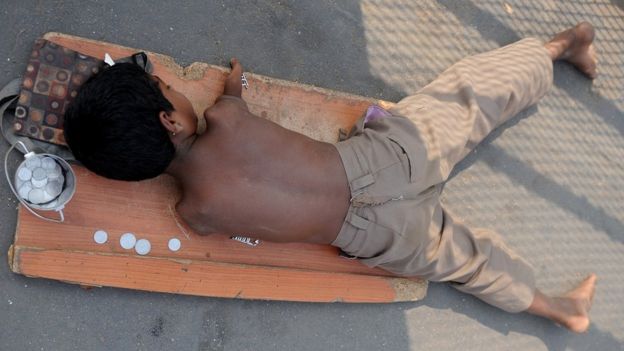June 1, 2016
The 2016 Global Slavery Index, from the Walk Free Foundation in Australia, defines slavery as “situations of exploitation that a person cannot refuse or leave because of threats, violence, coercion, abuse of power or deception”.
Modern forms of slavery can include debt bondage, where a person is forced to work for free to pay off a debt, child slavery, forced marriage, domestic servitude and forced labour, where victims are made to work through violence and intimidation.
The BBC looks at five examples of modern slavery.
1. The seafood industry
Human rights groups say thousands of people are trafficked and forced to work on fishing boats, where they can be kept for years without ever seeing the shore. Victims say those who are caught trying to escape can be killed and thrown overboard.
Thailand, which is the third largest exporter of seafood in the world, has been accused of crewing fishing boats with Burmese and Cambodian men who have been sold and forced to work as slaves. The authorities are trying to crack down on people traffickers.
Many victims say they were tricked by brokers who promised them factory jobs, and then put them on fishing boats where they were forced to work.
One Burmese man who escaped his traffickers said he was forced on to a tiny boat in the open sea where he fished 20 hours a day, with no pay.
“People said, anyone who tried to escape had their legs broken, their hands broken or were even killed,” he told the BBC.
Forced to fish: Slavery on Thailand’s trawlers
2. Cannabis factories and nail bars
Figures suggest there could be between 10,000 and 13,000 victims of slavery in the UK, trafficked from countries including Albania, Nigeria, Vietnam and Romania.
About 3,000 children from Vietnam alone are thought to be working in British cannabis farms and nail bars.
Many victims are told their families will be hurt if they leave.
One victim, Lam, was 16 years old when he came to the UK, hoping to earn money to send home to his family. Instead, he was forced to work in a cannabis factory.
“I remember asking the man who took me there if I could leave because I didn’t like it but he threatened to beat me or starve me to death,” he said.
Lam was arrested when police raided the house, and charged with drug offences – but was eventually helped by the NSPCC child trafficking advice centre.
UK slavery: Victims ‘need better support’
3. Sexual slavery

The International Labour Organization estimates that there are 4.5 million victims of forced sexual exploitation.
Shandra Woworuntu, an activist against human trafficking, was forced into sexual slavery in the US in 2001.
She left Indonesia when she was promised work in the hospitality industry in the US, but the agents who met her at the airport passed her on to armed traffickers, who forced her to carry out sex work.
“They told me I owed them $30,000 and I would pay off the debt $100 at a time by serving men,” she said.
She eventually managed to escape, and helped the FBI locate a brothel with other trafficking victims.
Shandra Woworuntu: My life as a sex-trafficking victim
4. Forced begging
The report highlights that many children across Europe, Asia, Africa, Latin America and the Middle East are forced to beg on the streets by criminals.
One victim told researchers: “Though I am begging I am not paid a single amount. I have to deposit all to them. I am deprived of food and good sleep. I am not paid my wages only working as a bonded labour.”
Another said: “I can’t say anything to you because I am in constant fear. I am threatened by my employer not to open my mouth to anybody otherwise I will be punished severely.”
5. Behind closed doors
Much modern slavery isn’t visible in public. It takes place in homes and private farms.
Last week, three men from the same family in the UK were jailed for forcing a man to do heavy labour for next to no money.
Michael Hughes, 46, was forced to work for the family for more than 20 years, doing building work and road laying.
He said he was made to live in a 1.2m (4ft) wide garden shed with no heating or running water for two years.
And last month, a UK man was jailed for two years in the first case of a man holding his wife in domestic servitude.
The wife was tortured, forced to do all the chores, and not allowed to leave home, prosecutors said.








